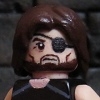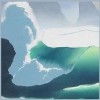-
![[image]](https://www.balancer.ru/cache/sites/ru/vf/vfl/images/ii/1418564233/1805f66d/128x128-crop/7217787_m.jpg)
Суда в шторм и на волнении
Теги:
Shoehanger>> 中共海軍最新型導彈驅逐艦不堪一擊 笑趴反共勢力 - YouTube
Cheslav> Работа тазиками впечатляет...
Новейший китайский эсминец, передовые технологии
Cheslav> Работа тазиками впечатляет...

Новейший китайский эсминец, передовые технологии


Охотское море.Танкер "Юганск"
Прикреплённые файлы:


- Bod [18.03.2016 11:29]: Перенос сообщений в Мусор
- Bod [20.03.2016 20:55]: Перенос сообщений из Фото и картинки [9]
Фотограф явно находился в "дорке".
Прикреплённые файлы:


Море довольно спокойное.А он так "зарылся"!
Прикреплённые файлы:


Танкер штормует на попутной волне.
Прикреплённые файлы:


Буйство стихии на Великих Озерах.
Прикреплённые файлы:


18 декабря 1944 г. USS Monterey и 3-й флот ВМС США преодолевают натиск тайфуна в Тихом океане; заявленная сила ветра превышала 100 узлов.


fordlibrarymuseum
In conjunction with the exhibit Taking the Seas: The Rise of the American Aircraft Carrier now on display at the Ford Presidential Museum we’ll be posting materials related to the exhibit and Gerald R. Ford’s service in the U.S. Navy over the next few months. On December 18, 1944, one of the worst typhoons encountered by the U.S. Navy in the Pacific Ocean struck the USS Monterey and the Third Fleet. Amongst the giant waves and hundred-knot winds three destroyers rolled over and capsized. Aboard the Monterey, Lieutenant Gerald R. Ford was on watch from midnight to 4:00 a.m. Just before dawn General Quarters sounded. On his way to the bridge the ship rolled and Ford was almost swept overboard, but he caught his footing on a steel ridge around the edge of the flight deck and swung himself onto the catwalk below. When Lt. Ford made it to the bridge he learned more about the problems the Monterey faced in the storm. He later recalled them in his memoirs A Time to Heal: Fifteen or twenty fighters and torpedo bombers were tied down on the hangar deck below. At the height of the storm, one of the planes broke loose from its cables. Every time the ship rolled, it crashed into other planes. Soon, a number of planes were darting around down there like trapped, terrified birds. Gas tanks were punctured, the friction produced sparks and a fire broke out…. With no one to tend them, three of the four boilers stopped functioning. The fire on the hangar deck was raging out of control, and if we lost the last boiler, we’d lose the pressure in our fire hoses and have no way to fight the blaze. We would have to abandon ship. Admiral William F. Halsey, commander of the Third Fleet, authorized us to do just that and he told two cruisers and three or four destroyers to stand by and try to rescue survivors. But our skipper, Captain Stuart H. Ingersoll, wasn’t ready to quit. “Give us more time,” I heard him radio from the bridge. “I think we can solve the problem.” The ship was still dead in the water. The storm was raging. The fire was uncontrolled. Ingersoll sent a rescue party wearing gas masks to the engine and boiler rooms. They brought out the survivors, kept the one boiler functioning and worked to repair the others. After seven hours of battering by monstrous waves, all our boilers were working again; we were able to extinguish the fire and steam toward the island of Saipan. Years later, when I became President, I remembered that fire at the height of the typhoon and I considered it a marvelous metaphor for the ship of state. Image: The USS Monterey encounters rough seas in the Pacific Ocean (AV82-203-021). // fordlibrarymuseum.tumblr.com

Широко известное в морских кругах фото.



Ярость Моря (2014)
Есть три типа людей: живые, мертвые и те что в море...Группа ВКонтакте Социальный проект "Доктор Onlinе" ТРК "Алекс" | ВКонтакте // dokonlin.ru
БПК проекта 1155.
SORRY, если было.
SORRY, если было.
Прикреплённые файлы:


Это сообщение редактировалось 03.04.2016 в 15:04
Броненосный флот и линкоры в штормовом море.
Прикреплённые файлы:


ventorum> Броненосный флот и линкоры в штормовом море.
2
2
Прикреплённые файлы:


ventorum> Броненосный флот и линкоры в штормовом море.
3
3
Прикреплённые файлы:


Работа с парусами в шторм.
Прикреплённые файлы:


Copyright © Balancer 1997..2025
Создано 10.06.2008
Связь с владельцами и администрацией сайта: anonisimov@gmail.com, rwasp1957@yandex.ru и admin@balancer.ru.
Создано 10.06.2008
Связь с владельцами и администрацией сайта: anonisimov@gmail.com, rwasp1957@yandex.ru и admin@balancer.ru.
 Cheslav
Cheslav



 инфо
инфо инструменты
инструменты
 3X
3X


 Shoehanger
Shoehanger















_and_battleship_in_typhoon_1944.jpeg)



 Memelender
Memelender

 vmart2005
vmart2005



 Bod
Bod












